Brown leaves on Plants are a sign of unhappy plants. Plants with Green leaves that have brown tips, crispy edges or brown spots on the leaves are in trouble.
This may be a little or a lot of trouble. Fixing the problem depends on what the problem is and how sick your plant is.
The first step is figuring out why the plant is unhappy. Then on to fixing the problem.
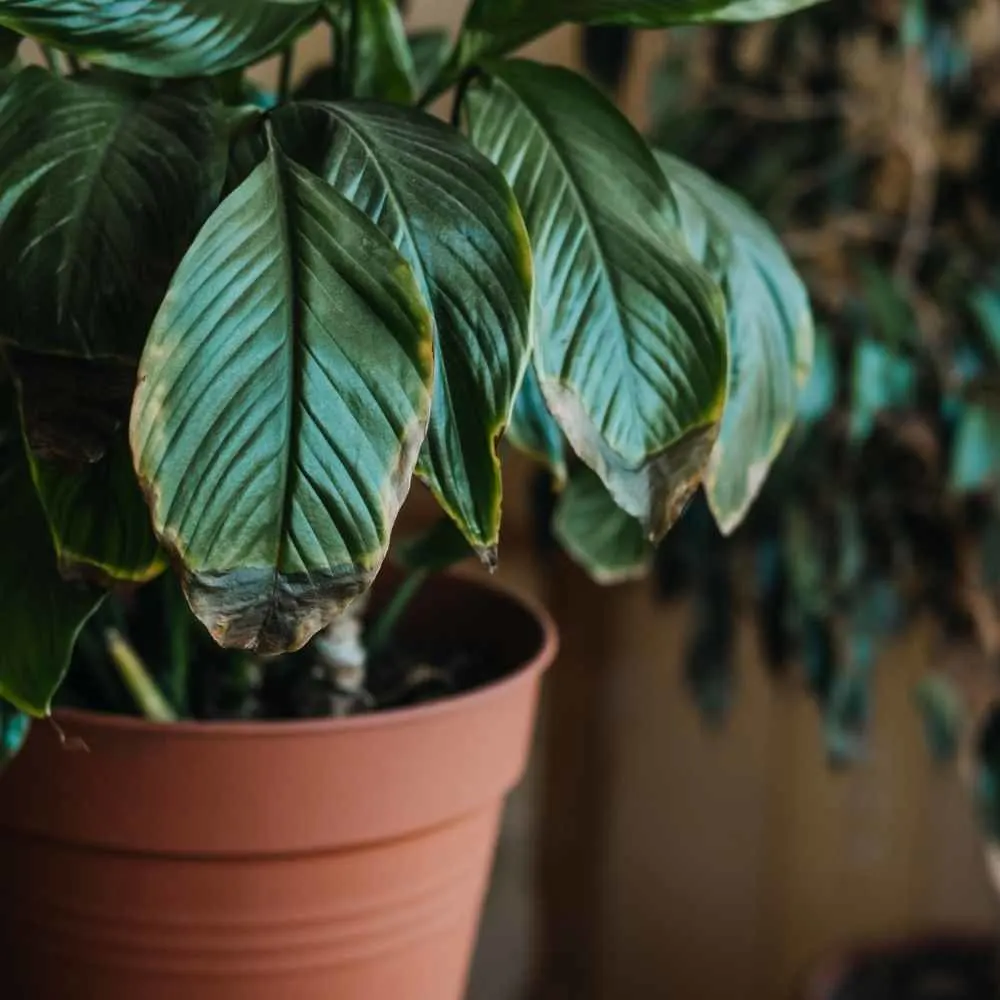
Why are my Plant Leaves Turning Brown and Crispy?
Plant leaves turn brown and crispy for a variety of reasons. Toxic water, PH, Salt accumulation in soil, humidity issues, fertilizers and watering practices can all cause brown leaves on plants.
This post will cover them all and show you how to fix them.
Reasons Plants get Brown Crispy Leaves.
Leaf browning can occur for a variety of reasons. However, improper care is usually at the root of it.
Nurturing plants occasionally requires putting on our detective hats. If you are hear to do research bravo for you. Let’s figure out what’s happening and why you have a browning plant.
A browning leaf can mean several things. Let’s get specific. Is a spot on the leaf dry and crispy? Is it the leaf tip, edge of in the leaf field?
The spots may not be crispy, but rather, places where the leaf is getting mushy.
Is a single whole leaf brown? Or several? Are they the upper leaves or lower? Plants talk to us through their foliage. Learn to read the signs.
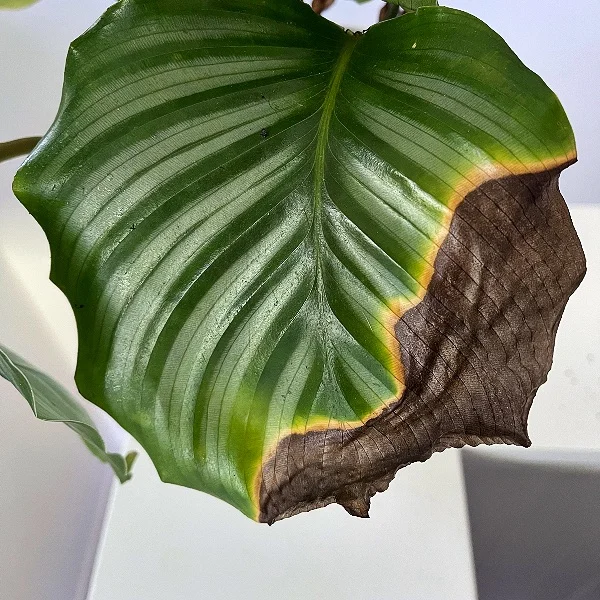
Watering Plants Improperly Results in Brown Leaves:
This is your most likely culprit. This is major issue for most plants and, fortunately, most easily fixed.
Brown leaves on plants often indicate the plant roots cannot optimally serve water and nutrients to the leaf due to root damage.
Water travels to the leaf from the roots and stem. Whenever that water route is inhibited or the roots are unhealthy, leaves are starved of water and nutrients.
In order to survive the plant reduces water to the outer edges of the leaf and/or the leaf tips. The plant’s ability to absorb water depends on its root system. The more healthy a plant’s roots, the better it can absorb water and send it out to the plant top growth.
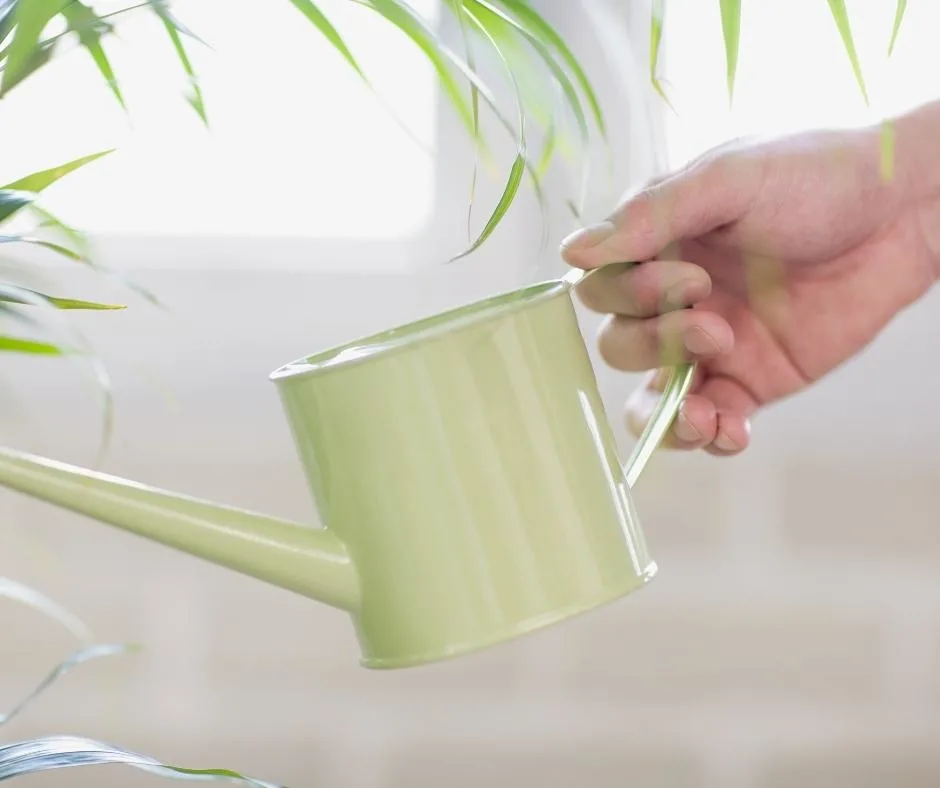
Both over watering and under watering can cause brown leaf tips. So can the TYPE of water you hydrate your indoor plant with. If you struggle with watering your indoor plants correctly, brown leaf tips, or yellowing leaves are likely to happen.
Over watering is most often responsible for root damage. Too much water in the soil can result in root rot and kill some or all of the plant roots. This inhibits the plants ability to serve the leaves with nutrients and water so the leaves dehydrate and can turn brown and crispy on the edges and tips.
If you suspect root rot, unpot the plant and check the roots. If the root ball smalls or the roots are black or brown or turn to mush when pressed your plant is in trouble.
Under watering can have the same result for the plant unfortunately. An overly dry plant root ball cannot deliver water any better than a root system destroyed and suffocated by too much excess water. The leaves will still dehydrate.
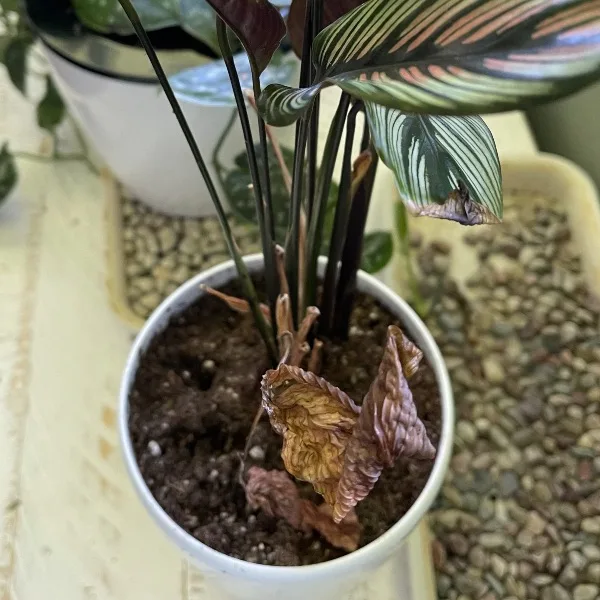
Inconsistent watering:
Indoor plants need their plant parents to provide them with water at a fairly regular rate to properly hydrate all their plant parts, including the leaf extremities.
Healthy roots are directly related to your watering practices. Inconsistent watering stresses root systems.
Roots allowed to get bone dry will eventually die and desiccate. When this happens, they do not feed the foliage and leaves. Then leaves turn yellow, then brown and eventually die.
Overly saturated roots also stress and kill plants. When you allow roots to get unhealthy by constantly stressing them, your plant is in trouble.
Read our Plant Watering Guide -learn how to water plants properly
Erratic watering puts plants under stress. The roots are either always too wet or always too dry. There are very few periods when they’re just right.
Plants vary in their ability to survive when watering delivery is inconsistent with their needs.
For example, Succulents are plants that are specially adapted to survive long stretches without watering. Snake plants, Zebra plants and other succulents will slow growth but often weather inconsistent watering without too much trouble.
Lovely fussy Calatheas, however will suffer instantly and start to show leaf stress when watering is not done just as they need it.
For many plants water must be delivered to their roots ball and leaves in the correct amount, and at regular intervals or the plant will show the stress through brown leaves.
However, we do not recommend a hard watering schedule for plant watering. We go over plant watering in detail in this post. It will help you learn all the finer points of properly watering house plants.
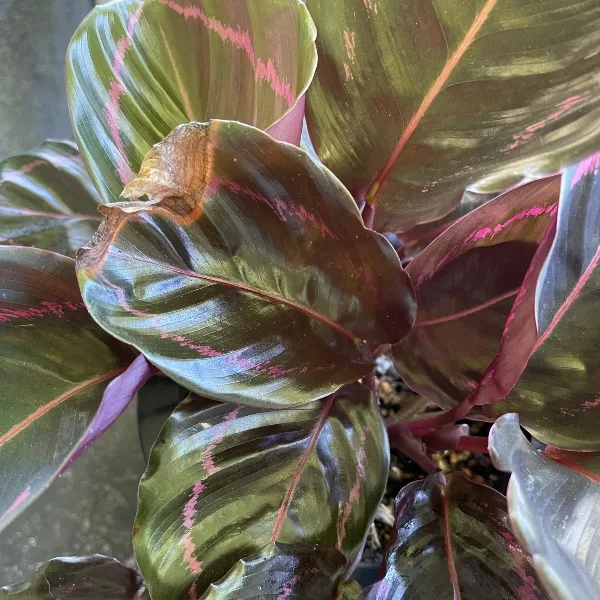
The Type Of Water Matters:
Brown spots and brown tipped leaves may indicate poor or toxic water.
- Tap water can also cause brown leaf spots or brown crispy leaf edges. Tap water is often full of harsh chemicals that will burn plant leaves. Chlorine in tap water, water softeners and even the natural minerals in the water can be a problem for some plants.
- Hard alkaline water (like my well water) is high in PH. Many indoor plants are tropical plants and prefer a soft acid water with a low mineral content and a ph of 5.5 to 6.5.
- Distilled water is always a safe choice for watering indoor plants. It is chemical free and has a neutral PH.
- Rain water is free and simple to collect from your homes down spouts or other capture system. Rain water is normally safe for plant watering.
Solution to Watering Problems:
Make sure your plant pot has drainage holes. This is essential for most plants. The excess moisture must not sit around your plant roots for long periods of time or your plants will suffer root rot.
Get an accurate moisture meter and find the moisture level your plants prefer on the meter. (the moisture meter I use has a list of common plants right on the box and the moisture level they are happiest with). Knowing when your plant has Adequate water, but not too much, is easier with a moisture meter to guide you.
When to Water: Check you plants for water every three to 7 days. This is all dependent on the weather, your local climate, the pot size the plants are growing in and the plant substrate you are using.
Use the water your plants thrive on. Learn your plants. What type of water do they do best on?
It may take some time to learn all your plants but you really just have to focus on the fussy ones. My calatheas are famously fussy. They have taught me what a sensitive houseplant is. Every little thing will impact them a LOT more than other, easy care, plants.
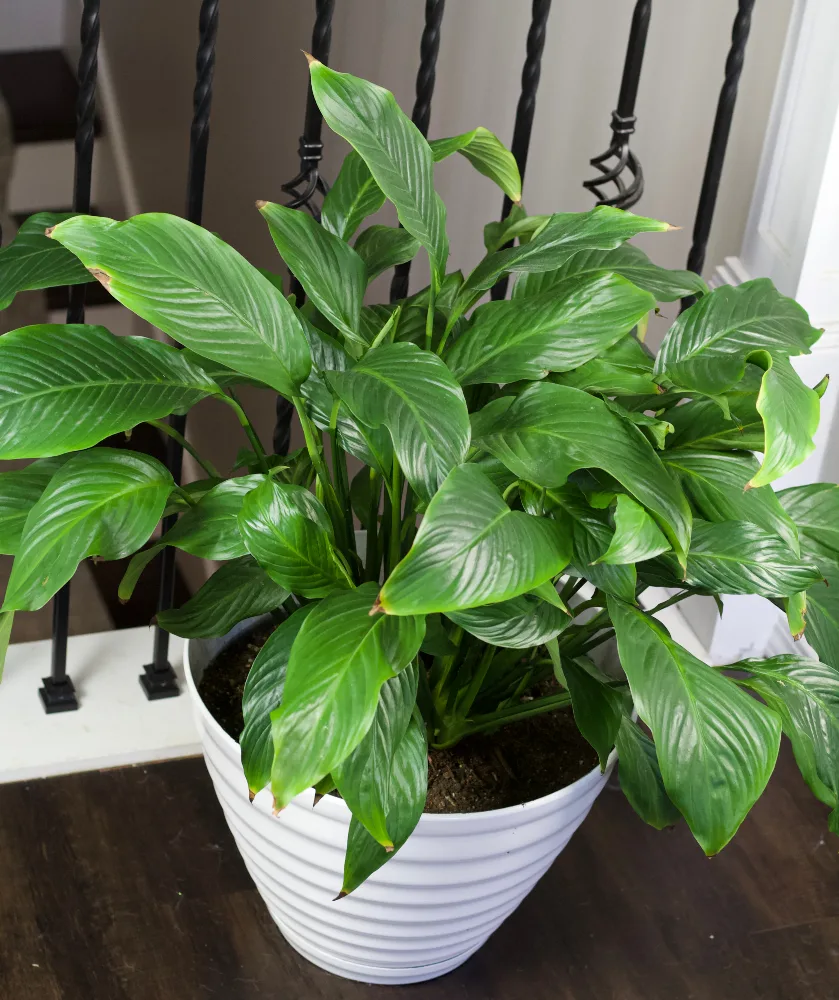
Humidity:
All plants respire through the leaves and hydrate through their leaves as well. There are a wide range of plants that love high humidity and require it for best leaf growth.
If you have plants with brown leaves it may be from low humidity. Are the tips or leaf edges brown and crispy looking? Is the plant healthy with just the very tips of the leaves brown? This is a common issue for many indoor plants.
Look up the care needs of your plant and see it’s optimal humidity range. There may be times you need to supplement humidity in your home to keep your plants happy.
Seasonal Changes:
In winter our plants can dry out from the heating system your home uses. However, the plants are more of less dormant this time of year so they use very little moisture.
If your leaves are brown and the soil hydration is perfect for them in winter, you may have too little humidity (discussed below). A Plant with brown edge on it’s leaves may be perfectly watered but the air is very dry.
Leaves hydrate through the roots. But also through the air. Most houseplants are native to tropical places where the air is warm and thickly moist. Kind of like a wet blanket. If you live in the Deep South your plants will probably be wonderfully hydrated from the air. But for plant parents in dry climates or who live with constant air conditioning, dry leaves with brown tips or edges can result.
How to add humidity to your plants environment.
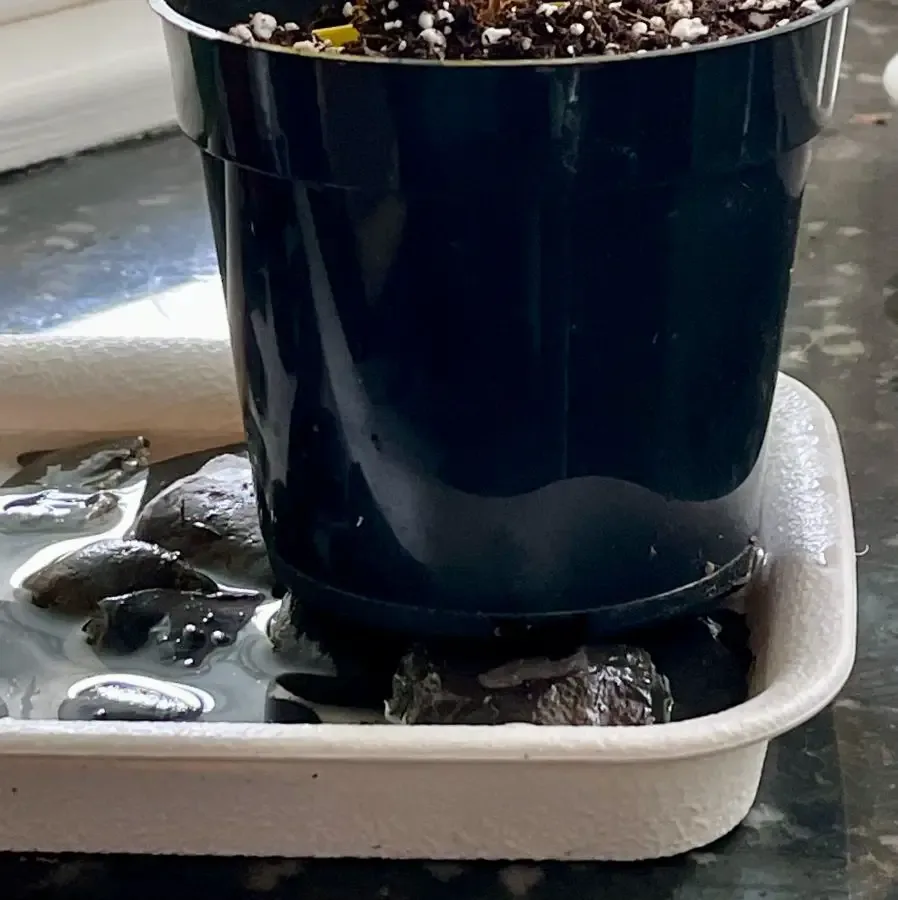
Do NOT regularly mist your plants. This is often recommended to add moisture to the plant leaves. This can make plants susceptible to fungal and bacterial disease and it not recommended. Here are some safe methods to increase humidity to your plant.
- Pebble Trays-just set the plant near a tray with pebbles and fill the tray with water so the water evaporates up into the leaves.
- Grouping plants close together. Set plants near each other in clusters so they respire around each other. This will increase available humidity to each plant.
- Placing plants in humid rooms like the bathroom or kitchen adds humidity to the plant and greenery to these rooms.
- Humidifiers-plants that like a lot of humidity often benefit from a room humidifier.
Salt buildup in Soil Can Cause Leaf Burn On Plants:
Accumulation of salt can cause crispy brown spots on the leaves. This can happen for several different reasons.
- Fertilizers: If you use harsh fertilizers, Fertilize too often, or in too high of concentration the salts in fertilizers can cause fertilizer burn. It looks like burned patches on the leaves.
- Old Soils: Buildup of salts happens from just having old soil too. All plant soils have a normal salt accumulation over time. This is one reason why it is a good read to repot your plants into new soil every other year.
- Lack of Drainage: Planters with no drainage holes will hold onto water and salts. The water will eventually evaporate, but the salts actually concentrate in the soil around the roots. This creates a toxic environment for the roots.
- Water Softeners: Built up salts also occur from using water artificially softened with water softeners.
- Hard, high mineral content water can also have a high accumulation of salts that will burn leaves.
- Continual bottom watering can result in salt build up in the soil. Bottom watering is a good thing but you need to occasionally flush the soil from the top to eliminate extra salts.
The solution for salt build up is to correct the problem and flush the potted plants soil to eliminate the extra salts.
Flushing the soil is done from the top of the planter. Set your plant under running water and let the water run through the pot until the water drains out the bottom for several minutes. This will eliminate extra salts in the soil.
Insect Infestations:
Pest infestations often cause leaf damage. Brown leaves can result from pests that damage the leave stem so the leaf cannot be fed properly.
Spider mites, mealy bugs, thrips and other pests cause damage to leaves that turn them yellow or brown.
Read our post on seven common pests that bother houseplants for more on this.
Bacterial Leaf Spots and fungal diseases:
Black spots or Brown SPOTS on the leaves may indicate a bacterial or viral leaf infection. Misting plant leaves is a causal agent of spots on plant leaves. Moisture sitting on your plant leaves in a warm environment invites pathogens into your plant leaf.
Harsh Bright Direct Light:
Most indoor plant leaves will fade, yellow and eventually brown as they bleach and burn form too intense sunlight. Succulents will tolerate strong direct sunlight but you may see their leaf tips brown and burn. Set them back further from the window to correct this.
Many houseplants are native to tropical rain forests. They are adapted to use indirect moderate light. These tropical indoor plants leaves will actually burn if the sunlight is too strong for them. Depending on the plant you may see burned leaf edges, tips and patches of brown on the plant.
Find a moderately bright indirectly lit area for these plants.
Normal Leaf Drop:
When healthy plants lose leaves on the bottom it is normally just the plant letting go of a leaf the plant no longer needs as it grows new foliage. To some extent, most plants occasionally drop leaves.
And some plants have leaves that die as new leaves grow on the plant. This is normal for them in moderation. Use a sterile sharp knife or scissors to cut off old dead leaves.
Their is a wide variety of normal with leaf drop. Find what is normal for your plant. A ficus benjamina is known for its messy leaf drops when it is perfectly healthy. This won’t be true for the Peace lily, however. When a peace lily drops leaves, pay attention. It is not happy.
More helpful Posts on plant care.
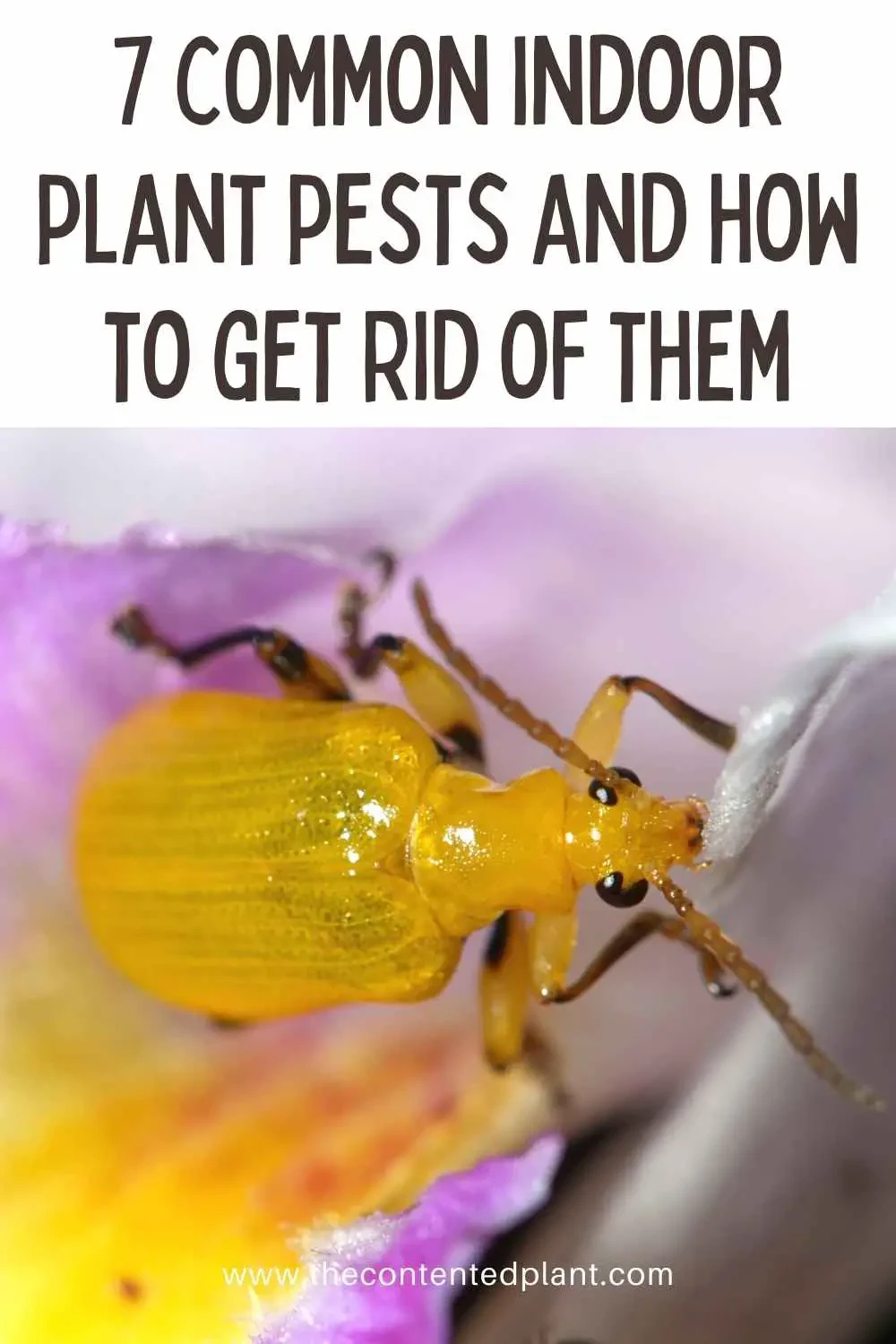
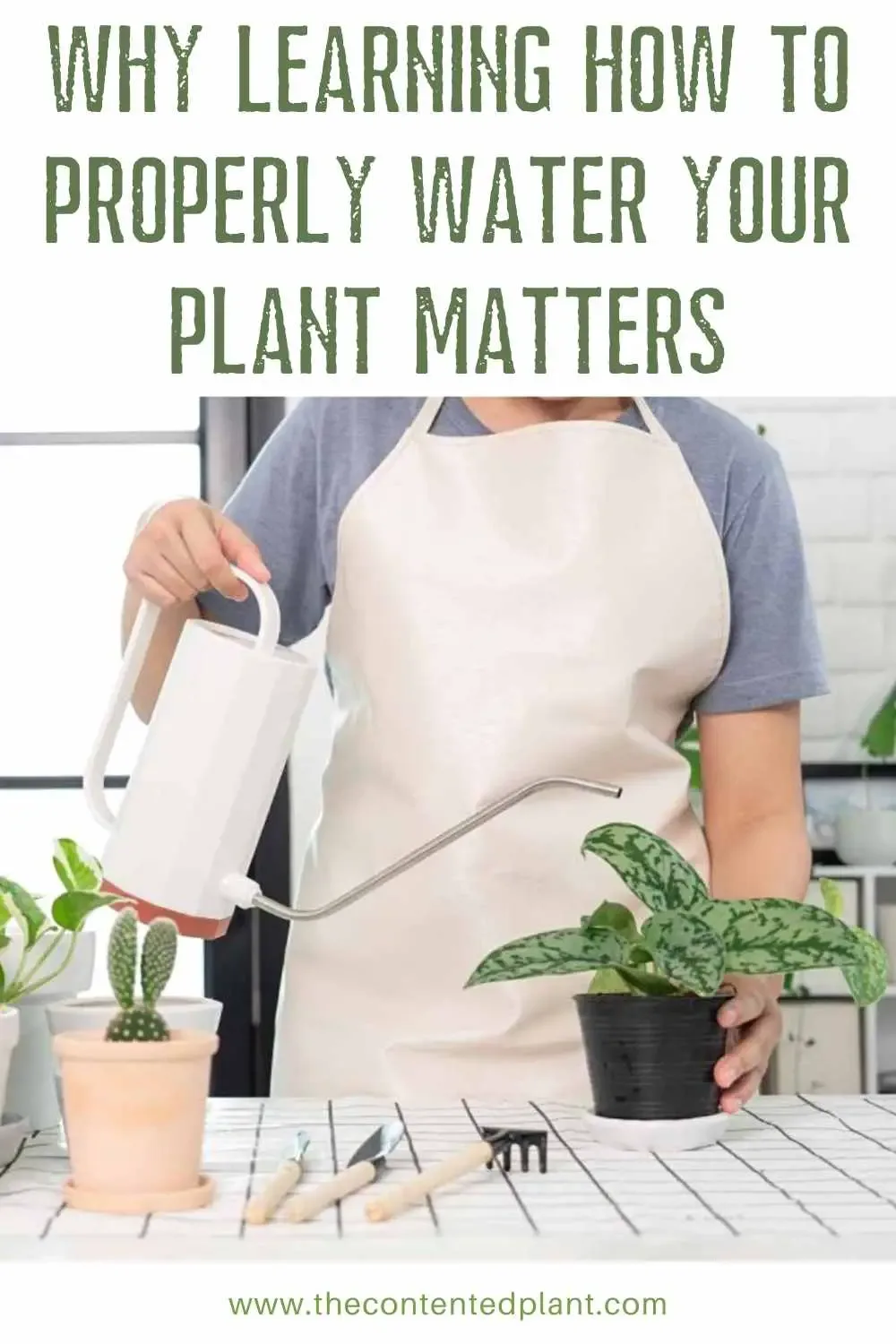
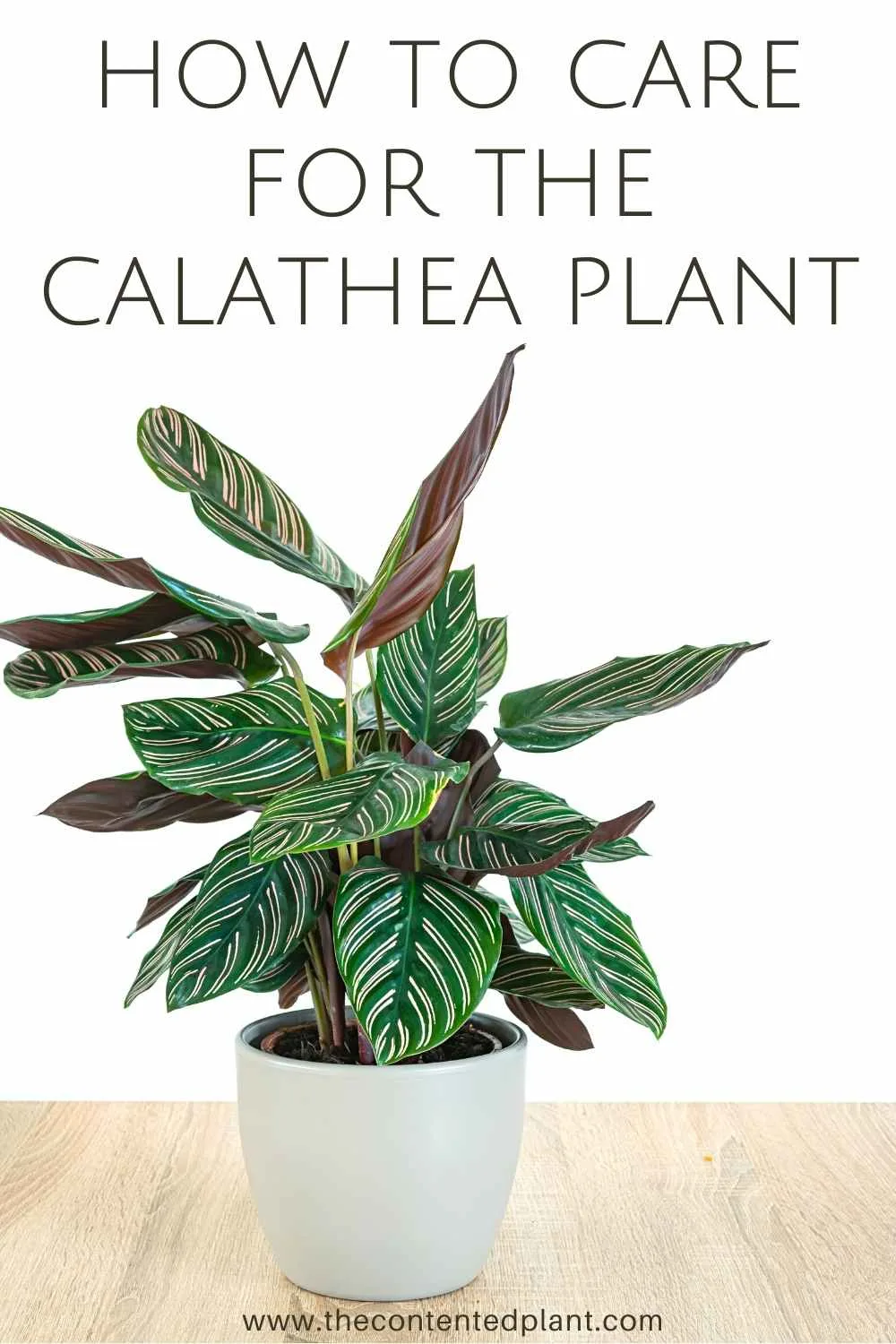
More Helpful Care Guides:
Follow Us:
Find us on YouTube, Instagram , Pinterest and TikTok! We love to Plant chat. We also comment, like and occasionally share your content to our daily stories. We’d love to see your plants. Share your joy in your houseplants. Happy Planting!
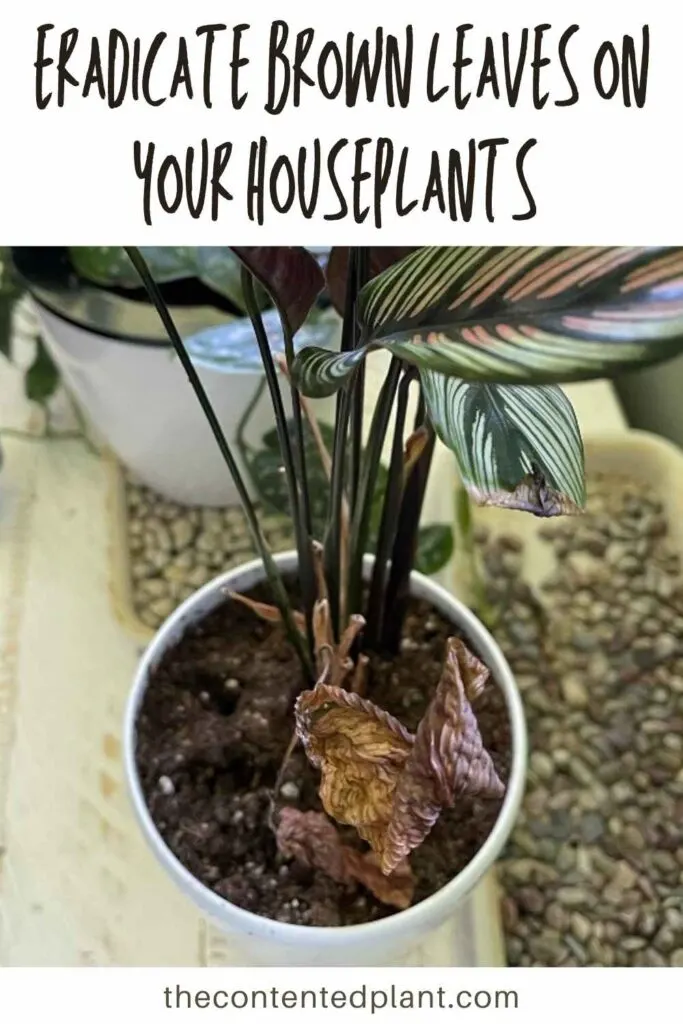

Choosing the Best Succulent Pots - The Contented Plant
Tuesday 22nd of November 2022
[…] conditions or they will eventually die of over watering. You may begin to see falling leaves or brown or yellowing leaves due to improper watering […]